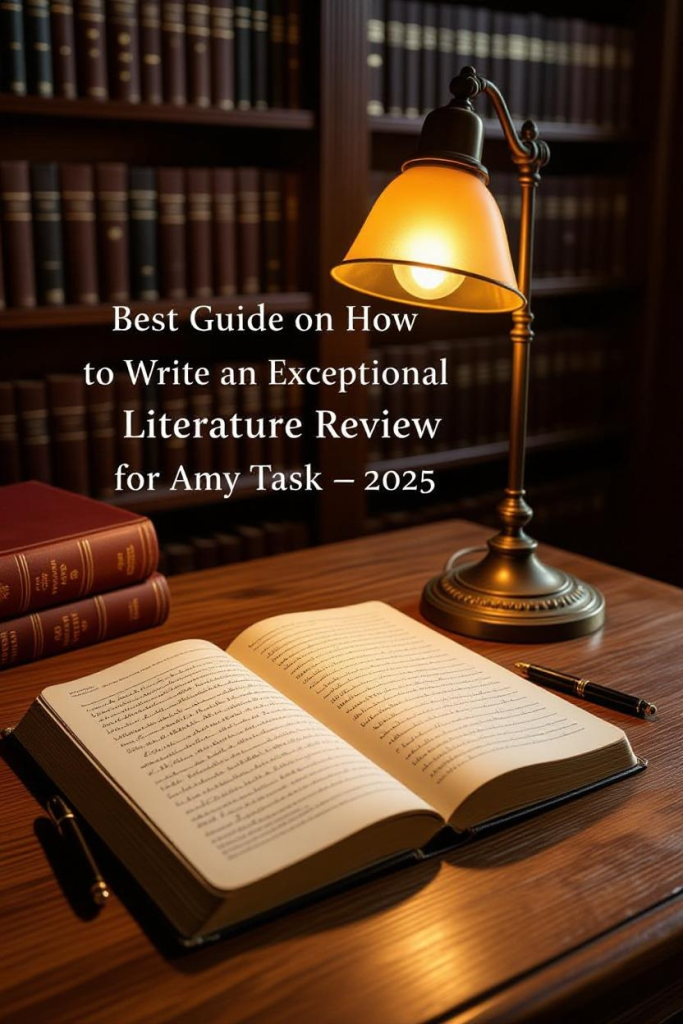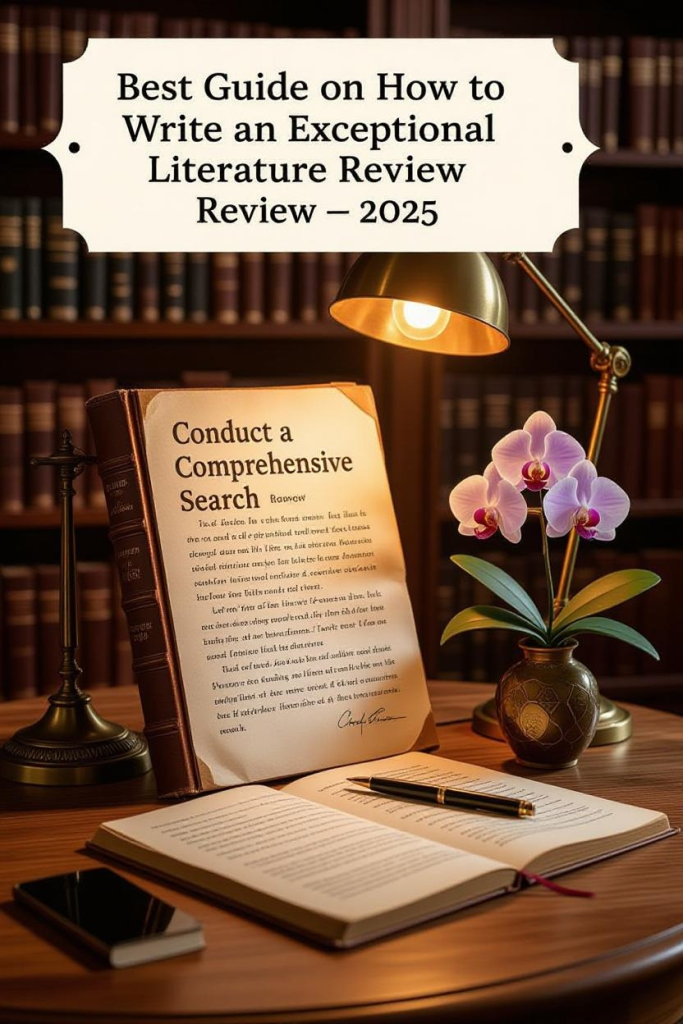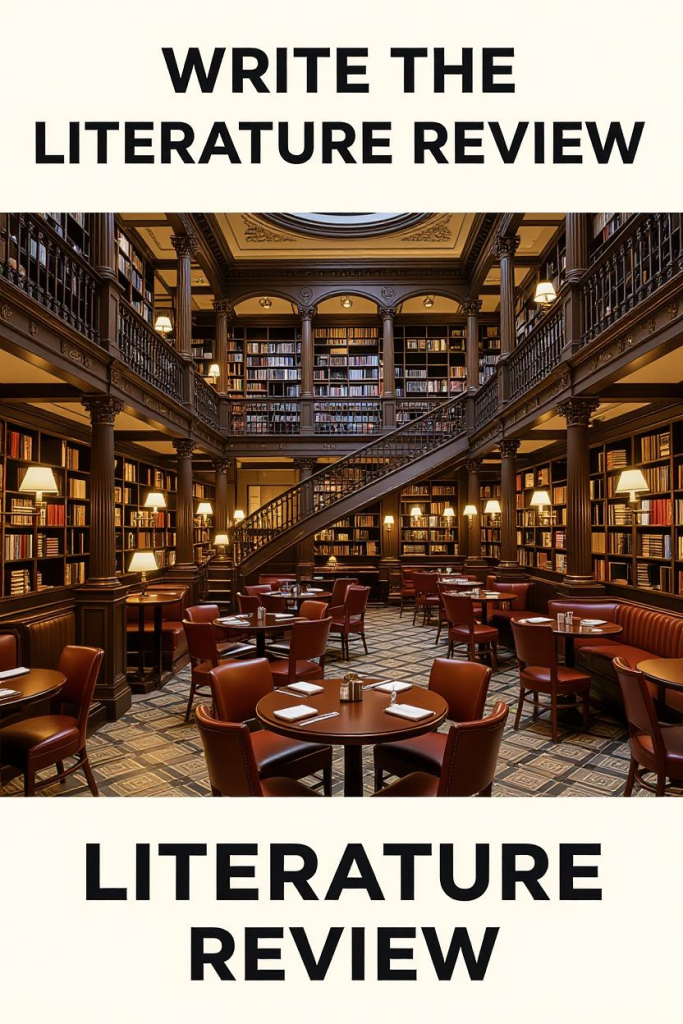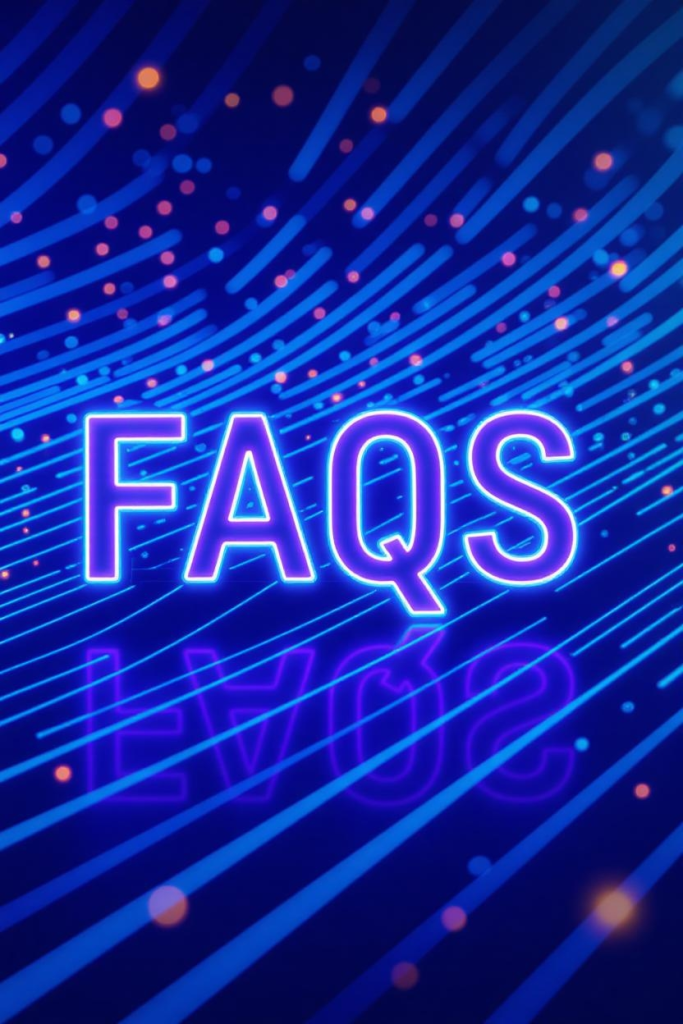
Introduction
Learn how to write an exceptional literature review in 2025 with our step-by-step guide. Discover expert tips, common mistakes, and examples to create a standout academic review for any research project.
A literature review is a critical evaluation of existing research on a specific topic. It’s not just summarizing sources—it’s about analyzing, comparing, and connecting research to build a foundation for your own study.
- Establishes context for your research
- Identifies gaps in knowledge
- Demonstrates expertise in the subject
- Supports your research argument
Step 1: Define Your Research Scope
Defining your research scope is the first and most critical step in writing a strong literature review. Without a clear scope, your review can become unfocused, lengthy, and less meaningful. A well-defined scope ensures that you only include sources relevant to your research question and objectives.
1. Identify Your Research Question or Problem
Start by asking yourself:
- What is the main problem or question my research aims to answer?
- Which aspects of the topic are most important for my study?
- Are there specific variables, theories, or populations I need to focus on?
🔹 Tip: A clear research question not only guides your search but also makes your literature review more coherent.
2. Determine the Scope of Your Review
Decide the boundaries of your research by considering:
- Timeframe: Do you want to include only recent studies (last 5–7 years) or seminal works as well?
- Geography or Population: Will your review focus on a particular country, region, or demographic?
- Type of Literature: Are you including only peer-reviewed articles, or also reports, books, or conference papers?
- Themes or Topics: Which specific aspects of the subject will you analyze in depth?
3. Set Clear Inclusion and Exclusion Criteria
Before starting your search, create a checklist:
- Include sources that are highly relevant to your research question and meet your quality standards.
- Exclude sources that are outdated, irrelevant, or unreliable.
This ensures your review remains focused and manageable.
4. Use Keywords and Search Strategies
Effective research begins with strategic searching:
- List primary keywords related to your topic.
- Identify synonyms and related terms to expand your search.
- Combine keywords using Boolean operators like AND, OR, NOT to refine results in databases like Google Scholar, JSTOR, or PubMed.
🔹 Pro Tip: Keep a research log documenting keywords, databases used, and preliminary findings. This saves time and prevents duplication later.
By defining your research scope early, you set a solid foundation for the rest of your literature review. This step ensures your review is focused, organized, and relevant—making the next stages of searching, analyzing, and synthesizing much more effective.
Step 2: Conduct a Comprehensive Search

Once you’ve clearly defined your research scope, the next step in writing an exceptional literature review is to gather relevant sources. Conducting a comprehensive search ensures your review is thorough, up-to-date, and academically credible.
1. Identify Key Sources
Focus on a mix of:
- Seminal Works: Foundational studies that shaped your field.
- Recent Publications: Research from the last 5–7 years to ensure your review reflects current trends.
- Relevant Theoretical Frameworks: Papers that introduce or critique models, theories, or approaches related to your topic.
🔹 Tip: Prioritize peer-reviewed journals, reputable books, and authoritative reports.
2. Choose Reliable Databases
Use trusted academic databases to find high-quality sources. Some popular options include:
- Google Scholar: Broad coverage of scholarly literature.
- JSTOR: Strong for humanities, social sciences, and historical studies.
- PubMed: Essential for health, medicine, and life sciences research.
- ScienceDirect: Great for STEM and interdisciplinary research.
- ERIC: Focused on education and pedagogy studies.
3. Use Effective Search Techniques
To make your search efficient:
- Use Keywords and Synonyms: Include all relevant terms, e.g., “digital learning,” “online education,” “e-learning.”
- Boolean Operators: Combine search terms using AND, OR, NOT to narrow or expand results.
- Filters: Limit by date, peer-reviewed status, language, or publication type.
- Citation Chaining: Check references in key articles to find additional relevant studies.
🔹 Pro Tip: Keep a research log noting the databases, search terms, and key findings. This helps track your progress and avoids duplicated efforts.
4. Organize Your Sources
Managing sources effectively is crucial for a structured literature review:
- Use reference managers like Zotero, Mendeley, or EndNote.
- Create folders for themes, methods, or chronological order.
- Note summaries and key insights for each source to simplify the synthesis process later.
By conducting a comprehensive and strategic search, you ensure your literature review is built on a solid foundation of credible, relevant, and diverse sources. This step not only strengthens your analysis but also saves time when you move on to evaluation and synthesis.
Step 3: Evaluate and Select the Best Sources
After conducting a comprehensive search, you’ll likely have a large pool of sources. The next step is evaluating and selecting the most relevant and credible ones. Choosing the right sources ensures your literature review is authoritative, accurate, and well-structured.
1. Apply the CRAAP Test
The CRAAP Test is a simple framework to assess the quality of each source:
- Currency: Is the information up-to-date and relevant to current research trends?
- Relevance: Does the source directly address your research question or theme?
- Authority: Is the author or publication reputable and recognized in the field?
- Accuracy: Is the information supported by evidence, references, or peer review?
- Purpose: Is the source objective and free from bias, or is it primarily opinion-based?
🔹 Pro Tip: Avoid sources that fail multiple CRAAP criteria, as they can weaken the credibility of your review.
2. Prioritize Scholarly Sources
Focus on peer-reviewed journals, academic books, and credible reports. These sources have been reviewed by experts in the field and are more reliable than general websites or opinion pieces.
- Use high-impact journals in your field for authoritative research.
- Include seminal studies to show foundational knowledge.
- Balance with recent research to demonstrate awareness of current debates.
3. Check Methodology and Evidence
Not all studies are equally rigorous. Evaluate each source for:
- Sample size and study design (for empirical research)
- Data reliability and statistical analysis
- Clarity of argument and logical reasoning
🔹 Pro Tip: Sources with strong methodology add credibility to your review and provide trustworthy evidence for your arguments.
4. Identify Relevance to Your Scope
Even high-quality sources may not be directly useful. Ask:
- Does this study address my research question or theme?
- Does it contribute to understanding trends, gaps, or debates?
- Does it support or challenge other sources I’ve found?
Only select sources that add value to your analysis, rather than simply increasing your reference count.
5. Organize Selected Sources
Once you’ve chosen the best sources:
- Categorize them by themes, methodologies, chronology, or theoretical frameworks.
- Keep concise notes summarizing key findings, strengths, and weaknesses.
- Use reference management tools like Zotero, Mendeley, or EndNote to track citations and avoid missing references.
By carefully evaluating and selecting sources, you ensure your literature review is credible, focused, and relevant, providing a strong foundation for analysis and synthesis in the next steps.
Step 4: Analyze and Synthesize

Once you’ve gathered and selected your sources, the next step is to analyze and synthesize the information. This is where your literature review moves beyond simple summaries and becomes a critical, coherent narrative that highlights trends, debates, and gaps in the field.
1. Analyze Key Themes and Patterns
Look for recurring themes, ideas, and findings across your sources:
- Are there consistent conclusions among researchers?
- Do some studies contradict others?
- What are the major debates or controversies in your topic area?
🔹 Pro Tip: Use a matrix or chart to visually compare studies by theme, methodology, or outcomes. This helps identify patterns quickly.
2. Compare and Contrast Studies
Don’t just list studies—show relationships between them:
- Highlight agreements and disagreements.
- Discuss differences in methodology, sample size, or theoretical approach.
- Identify strengths and weaknesses in previous research.
Example:
Instead of writing:
“Smith (2022) found that online learning improves engagement.”
Write:
“While Smith (2022) argues that online learning enhances engagement, Lee (2023) notes challenges in maintaining focus, suggesting a need for long-term behavioral studies.”
This approach demonstrates critical thinking and analytical depth.
3. Identify Research Gaps
One of the most important outcomes of a literature review is highlighting areas that need further research:
- Are there unanswered questions or unresolved conflicts?
- Are certain populations, regions, or methodologies underrepresented?
- Does the current research support or challenge your study’s hypothesis?
🔹 Pro Tip: Explicitly noting gaps not only strengthens your review but also sets the stage for your own research contributions.
4. Synthesize Information
Synthesis means combining insights from multiple sources into a cohesive narrative:
- Group studies under thematic headings.
- Show how different sources relate to each other.
- Connect the literature to your research question or objective.
Example:
“Overall, research indicates that digital tools can enhance learning outcomes. However, varying methodologies and inconsistent findings on student motivation highlight the need for further investigation, particularly in longitudinal studies.”
5. Use Visual Aids (Optional)
Tables, charts, and concept maps can help synthesize complex information and make patterns easier to understand:
- Tables: Compare authors, methods, and findings.
- Concept Maps: Show relationships between theories, variables, or trends.
- Graphs: Highlight data trends across studies.
By analyzing and synthesizing sources effectively, your literature review will go beyond a summary, offering a critical, organized, and insightful overview of existing research. This sets a strong foundation for your own study and demonstrates your mastery of the topic.
Step 5: Organize Your Review Logically

After analyzing and synthesizing your sources, the next critical step is to structure your literature review. A clear and logical organization makes your review easier to read, helps highlight key insights, and ensures your analysis flows naturally.
1. Choose an Appropriate Structure
There are several ways to organize a literature review depending on your research topic and objectives:
- Chronological Structure:
Presents research in the order it was published. Ideal for topics where trends, developments, or historical progression are important. - Thematic Structure:
Groups studies by themes, topics, or concepts. Best for reviews that focus on specific aspects of a larger subject. - Methodological Structure:
Organizes studies by research methods used. Useful if comparing approaches, techniques, or experimental designs. - Theoretical Structure:
Groups sources according to the theories or models they use. Ideal for studies that rely heavily on conceptual frameworks.
🔹 Pro Tip: Select the structure that best highlights trends, gaps, or debates relevant to your research question.
2. Create a Clear Outline
Before writing, develop an outline to organize your points logically:
Sample Outline:
- Introduction
- Brief overview of the topic
- Objectives of the review
- Scope and criteria for selecting sources
- Body
- Thematic/chronological/methodological sections
- Key findings from sources
- Analysis of agreements, contradictions, and gaps
- Conclusion
- Summary of main insights
- Implications for your research
- Recommendations for future studies
3. Use Headings and Subheadings
Clear headings guide the reader and improve readability:
- Use H2 headings for main sections (Introduction, Body, Conclusion)
- Use H3 or H4 headings for subtopics or themes
- Ensure headings reflect the logical flow of your review
4. Maintain Coherence and Flow
- Transition smoothly between themes or studies.
- Use linking phrases like:
- “In contrast…”
- “Similarly…”
- “Building on the work of…”
- Ensure each paragraph contributes to the overall narrative and connects back to your research question.
5. Balance Summary and Analysis
While organizing, remember:
- Summary: Briefly describe key findings of each study.
- Analysis: Highlight patterns, conflicts, gaps, and implications.
A well-structured review balances both to maintain clarity and authority.
By organizing your literature review logically, you ensure your readers can easily follow your argument, understand the trends and gaps in the research, and see how your study fits into the existing body of knowledge.
Step 6: Write the Literature Review

After defining your scope, gathering sources, analyzing them, and organizing your review, it’s time to write your literature review. Writing effectively ensures your review is coherent, critical, and engaging for your readers.
1. Introduction
The introduction sets the stage for your review and should include:
- Overview of the topic: Briefly explain the subject and its significance.
- Purpose of the review: Define the objectives and focus of your literature review.
- Scope and criteria: Mention the time frame, sources, or themes included.
- Organization of the review: Outline the structure to guide the reader.
Example:
“This review examines recent research on digital learning, focusing on student engagement, motivation, and digital fatigue. Studies from the last five years were selected to provide a current perspective, and the review is organized thematically to highlight key trends and gaps.”
2. Main Body
The main body presents your analysis and synthesis. Use headings and subheadings to structure it clearly:
- Thematic Sections: Divide by themes or topics.
- Comparisons and Contrasts: Show relationships between studies, highlighting agreements, contradictions, and trends.
- Critical Evaluation: Discuss the strengths, weaknesses, and methodological differences of the studies.
- Gaps and Implications: Identify research gaps and explain how your study addresses them.
Example Paragraph:
“Several studies suggest that online learning enhances flexibility and access (Smith, 2022; Jones, 2023). However, Lee (2023) found that prolonged screen time may reduce motivation, indicating a need for long-term behavioral studies. This highlights a gap in understanding the sustainability of engagement in digital learning.”
3. Conclusion
The conclusion summarizes your findings and connects them to your research:
- Summarize key trends and insights from your review.
- Link to your research question or study to show relevance.
- Suggest future research directions based on identified gaps.
Example:
“Overall, research demonstrates that digital tools can improve learning outcomes, but challenges such as motivation and fatigue require further study. Addressing these gaps will inform the design of more effective online learning strategies.”
4. Writing Style Tips
- Be critical, not just descriptive: Evaluate, compare, and interpret findings.
- Maintain coherence: Ensure smooth transitions between sections and ideas.
- Use academic language: Avoid casual phrasing and maintain formal tone.
- Balance summary and analysis: Integrate sources into your narrative rather than listing them.
5. Cite Your Sources Properly
- Use the required citation style (APA, MLA, Harvard, Chicago).
- Include in-text citations for every study you mention.
- Prepare a complete reference list at the end of your review.
🔹 Pro Tip: Citation management tools like Zotero, Mendeley, or EndNote make this process faster and more accurate.
By following these steps, your literature review will be clear, structured, and authoritative, effectively linking existing research to your study and demonstrating your expertise in the field.
I can now continue with Step 7: Cite Sources Correctly in the same SEO-ready, detailed format. Do you want me to do that next?
Step 7: Cite Sources Correctly
Always use the required citation style (APA, MLA, Harvard, Chicago). Citation managers can generate references automatically.
Common Mistakes to Avoid
- Summarizing instead of analyzing
- Ignoring recent studies
- Using unreliable sources
- Poor organization
- Failing to connect to your research question
Example Thesis Statement for a Literature Review
“While research highlights the benefits of online learning, limited studies examine digital fatigue’s effect on motivation, an area this review aims to address.”

1. How long should a literature review be?
- Undergraduate essays: 1–2 pages
- Master’s dissertations: 2,000–3,000 words
- Doctoral theses: 8,000+ words
2. Can I include non-scholarly sources?
Yes, if they’re credible and relevant, like government reports.
3. Difference between a literature review and annotated bibliography?
An annotated bibliography lists sources individually. A literature review synthesizes them into a cohesive argument.
4. How do I know when it’s complete?
When you start encountering recurring sources and ideas—it means you’ve covered major research.
Final Thoughts
Writing an exceptional literature review requires analysis, synthesis, and organization. A strong review not only summarizes research but builds the foundation for your study.
For professional help, Essayassists.com offers expert academic writers who specialize in literature reviews—ensuring your 2025 project stands out.
